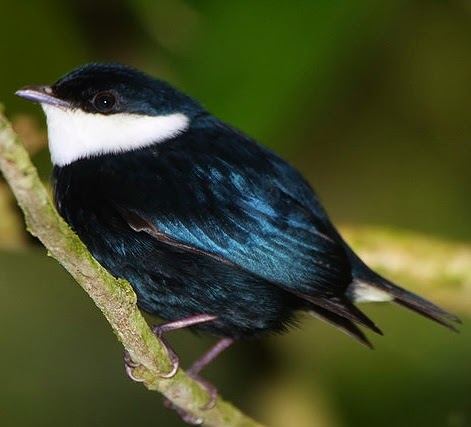 |
| Photo by Larry Thompson (Discover Life) |
Common name:
white-ruffed manakin (en); rendeira-de-garganta-branca (pt); manakin à fraise (fr); saltarín de barba blanca (es); weißkragenpipra (de)
Taxonomy:
Order Passeriformes
Family Pipridae
Range:
This species is found from the eastern Honduras south to Colombia and western Venezuela.
Size:
These birds are 10 cm long and weigh 12-13 g.
Habitat:
The white-ruffed manakin is found in the understory of moist tropical forests, especially in lowland areas, but also in mountainous areas up to an altitude of 1.500 m.
Diet:
They forage among the foliage in the forest understorey, taking mainly fruits, such as Casearia arborea, Conostegia cooperi, Henriettella tuberculosa, Miconia smaragdina, Oreopanax sp. and Ossaea sp., but also some insects. They often join tanagers and other birds in mixed-species foraging flocks.
Breeding:
White-ruffed manakins breed in April-June. The males form a lek where they display to attract females, having no further part in the breeding process after mating. Each female builds her nest, a shallow cup made of dark fungal filaments and dry leaves. The nest is placed in an horizontal fork, 5-7 m above the ground. She lays 2 whitish eggs with brown markings, which she incubates alone for 18-21 days. The chicks are fed by the mother but there is no information regarding the length of the fledgling period.
Conservation:
IUCN status – LC (Least Concern)
This species has a large breeding range and is described as common in Costa Rica and fairly common to common in Panama. The population is suspected to be stable in the absence of evidence for any declines or substantial threats.







